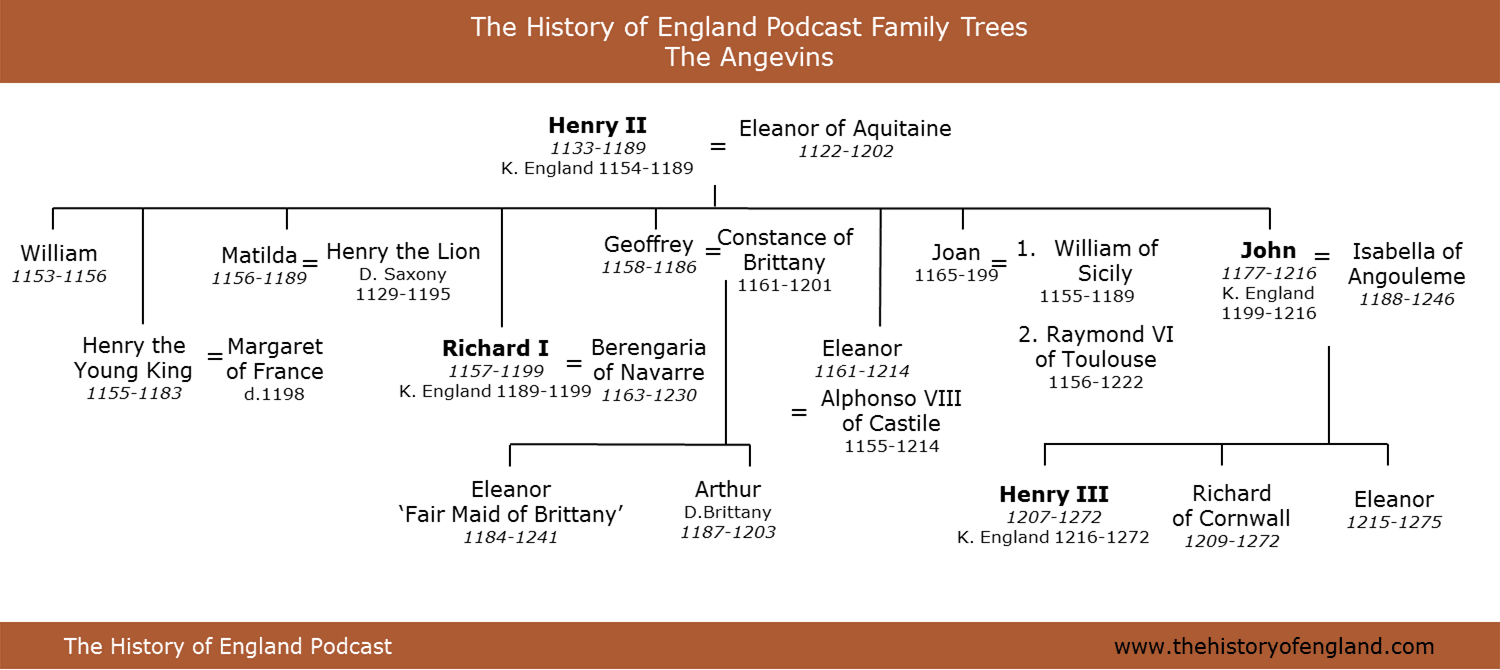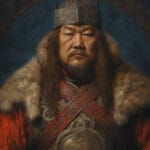Curious about the family drama that surrounded King Henry II? Prepare to untangle the twisted branches of his family tree as we dive into the juicy details of his bloodline, from his royal roots to his scandalous marriage with Eleanor of Aquitaine. Let’s uncover the connections and relationships that made Henry II tick.
King Henry II Family Tree: A Tangled Web of Power, Love, and Betrayal
King Henry II wasn’t just any monarch; he descended from a long line of powerful figures, stretching back to Fergus (Maceric-1), the King of Dal Riata in the sixth century. He was even the great-great-great-grandson of William the Conqueror, solidifying his claim to the English throne. However, Henry’s path to power wasn’t paved solely through lineage. He strategically married Eleanor of Aquitaine in 1152, securing not only a beautiful and influential queen but also her vast wealth and control over a significant portion of France.
This power couple had a whopping eight children, each playing a role in the tapestry of history:
- William IX: Sadly, William passed away at the tender age of three.
- Henry the Young King: Groomed for kingship, Henry ruled alongside his father until his death in 1183.
- Matilda: She married Henry the Lion, Duke of Saxony.
- Richard I: The legendary Richard the Lionheart inherited the throne in 1189, known for his bravery and military prowess.
- Geoffrey II: The Duke of Brittany, Geoffrey sadly died young in 1186.
- Eleanor: Following in her mother’s footsteps, Eleanor became Queen of Castile through her marriage to King Alfonso VIII.
- Joan: Another daughter, another crown! Joan became Queen of Sicily by marrying King William II.
- John: The youngest son, John, became king in 1199 but faced significant challenges during his reign, notably his conflict with the legendary Robin Hood.
Henry’s influence extended far beyond England, encompassing territories like Aquitaine, Gascony, Wales, Scotland, Ireland, and parts of France. This sprawling domain cemented his position as one of Europe’s most powerful rulers.
King Henry II’s family tree reads like a captivating historical drama, filled with love, ambition, betrayal, and power struggles. His descendants spread throughout the royal families of England, France, and beyond, shaping the course of history for centuries. So, the next time you encounter King Henry II’s name, remember the intricate and fascinating web of relationships that shaped his reign.
Did you know the house of Plantagenet folklore has many fascinating details about King Henry II’s descendants?
Who Are the Key Figures in King Henry II’s Family Tree?
Unraveling King Henry II’s family tree reveals a cast of powerful personalities who not only influenced his life but also left an indelible mark on history. His parents, Matilda and Geoffrey V, played pivotal roles in shaping his character and ambitions. Matilda, daughter of King Henry I of England, was a formidable woman actively involved in her son’s political and military endeavors. Geoffrey V, Count of Anjou, was a skilled military strategist who laid the groundwork for Henry’s future power by expanding their territories.
Then, there’s Eleanor of Aquitaine, Henry II’s remarkable wife. As the former Queen of France, Eleanor brought immense wealth and political clout to their marriage. Her dowry included the Duchy of Aquitaine, significantly expanding Henry’s domain. More than just a queen, Eleanor was a patron of the arts and learning, shaping the culture of Henry’s court.
Their children, each ambitious in their own right, also feature prominently in the annals of history. Richard I, better known as Richard the Lionheart, became a legendary warrior during the Third Crusade. John, the youngest son, eventually became King of England but faced a tumultuous reign, including the loss of Normandy to the French.
The Plantagenet family dynamics were fraught with tension. Sibling rivalry, particularly between the brothers, fueled power struggles and betrayals that reverberated throughout the political landscape. Even Eleanor, with all her power and influence, grappled with Henry’s rumored infidelities and her sons’ relentless competition.
Exploring the key figures in Henry II’s family provides valuable insight into the events that defined his reign. His parents shaped his upbringing, his children challenged his authority, and his wife, well, she deserves recognition for navigating the complexities of their relationship and leaving her own mark on history. The Plantagenets, with their larger-than-life personalities, left an enduring legacy on English history, the effects of which are still felt today.
How Far Back Does King Henry II’s Lineage Extend?
King Henry II’s family tree boasts remarkable antiquity, tracing back to the 6th century and the reign of Fergus (Maceric-1), King of Dal Riata. This impressive lineage is meticulously documented thanks to the British royals’ long-standing tradition of genealogical record-keeping. Their meticulous attention to ancestry allows us to trace their lineage back centuries with remarkable detail.
This rich lineage even connects Queen Elizabeth II to King Alfred the Great, highlighting the continuity and historical significance of the British monarchy.
Henry’s marriage to Eleanor of Aquitaine further solidified his power and extended his reach. This strategic union brought him control over vast territories, including Wales, Ireland, and a substantial portion of western France, showcasing his ambition and strategic prowess.
Henry II fathered eight children, including notable figures like King Richard I (the Lionheart), Geoffrey of Brittany, and King John, who became subjects of legends and historical accounts.
Interestingly, the current royal surname, “Windsor,” was adopted in 1917 amidst the turmoil of World War I. This change aimed to distance the royal family from their German heritage during a time of heightened anti-German sentiment.
What Was the Impact of King Henry II’s Marriage to Eleanor of Aquitaine?
Henry II’s marriage to Eleanor of Aquitaine in the 12th century was more than just a royal union; it was a seismic event that reverberated throughout Europe. The ambitious young Henry found the perfect partner in Eleanor, a woman who possessed immense influence and ruled over vast territories, including the Duchy of Aquitaine. This marriage was a strategic alliance, a merging of land, power, and ambition that would reshape the political landscape.
Eleanor was a force to be reckoned with. She had already been the Queen of France, and she brought her sharp political acumen, military experience, and cultural influence to the English court. Her support proved crucial in Henry’s successful bid for the English crown in 1154. It’s no exaggeration to say that without Eleanor, Henry’s story might have unfolded quite differently.
However, their relationship, like many throughout history, was not without its complexities. Rumors of Henry’s infidelity and the growing ambitions of their children caused significant strain. Eleanor eventually returned to Aquitaine, a clear sign of the marital discord brewing beneath the surface.
The impact of their marriage, however, extended far beyond their personal relationship. Their children, including figures like Richard the Lionheart and John, grew up to become major players on the world stage. The legacy of this power couple resonated through generations, shaping the political landscape of Europe for centuries. Their union triggered wars, forged alliances, and altered the course of history, illustrating the profound impact a strategic marriage between two powerful individuals can have on the world.
- Unlock 6000+ words beginning with he: A comprehensive analysis - April 20, 2025
- Mastering -al Words: A Complete Guide - April 20, 2025
- Master Scrabble: High-Scoring BAR Words Now - April 20, 2025






![Unveiling the History of English Drama: A Journey Through the Ages [history of english drama notes] history-of-english-drama-notes_2](https://www.lolaapp.com/wp-content/uploads/2023/12/history-of-english-drama-notes_2-150x150.jpg)










Comments are closed.